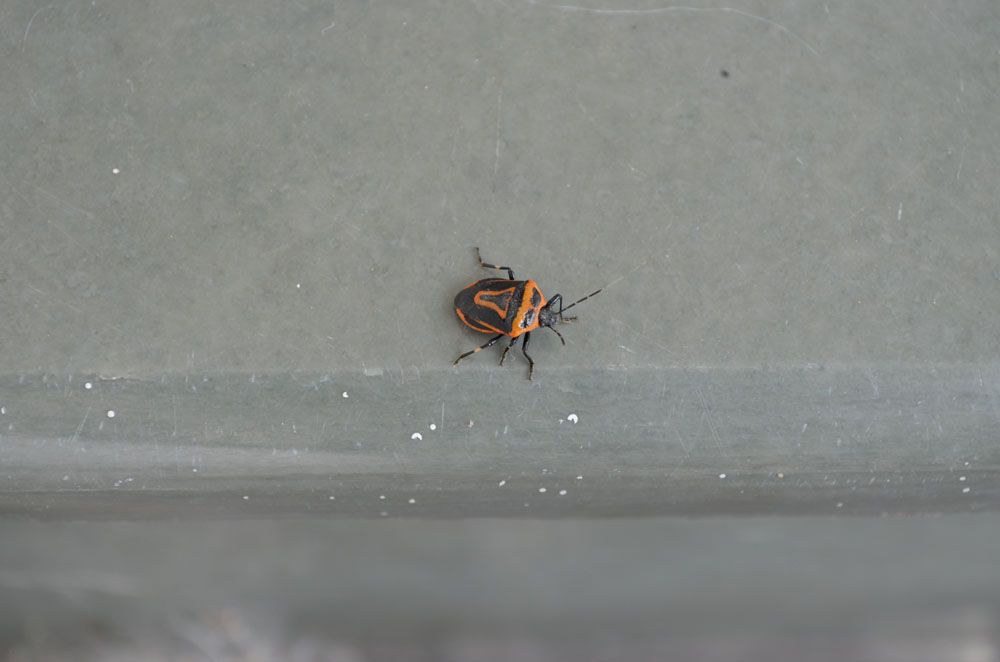
Twospotted Stink Bug – Pentatomidae family
Two spotted Stink Bug – Pentatomidae family
Common Name: Two spotted Stink Bug
Latin Name: Pentatomidae family
Appearance:
- Adults have two distinct spots on the tops of their thoraxes and a keyhole-shaped pattern on the backs of their bodies. The head and legs are both black, with a white stripe on the latter.
- The thorax and abdomen are coloured differently, with black patterns on either a red, orange or tan background; the’ shoulders’ are rounded, as opposed to the spines observed in other predatory stink bugs. Like other predatory stink bugs, two-spotted stink bugs have beaks that are at least twice as thick as their antennae.
- Nymphs There are no wings—adult-like beaks. Overall, the form is circular, with a somewhat flattened underside. The head, thorax, and legs are all black or brown—Red, orange, or brown O shape on the abdomen, with black patches around the edge.
Territory:
They are native to North America but have spread to Eastern Europe and North India.
Damages caused by two spotted Stink Bug:
There are three forms of damage caused by stink bug feeding. They can destroy tiny seedlings, stunt plants, and induce “suckering” (the production of tillers from the base of damaged plants)
Life history and habits:
The entire life cycle takes between 49 and 70 days to complete, depending on temperature. Under laboratory conditions (25 2°C, 20 5% relative humidity, 16 L:8D photoperiods), two spotted stink bugs can have up to eight generations each year.
